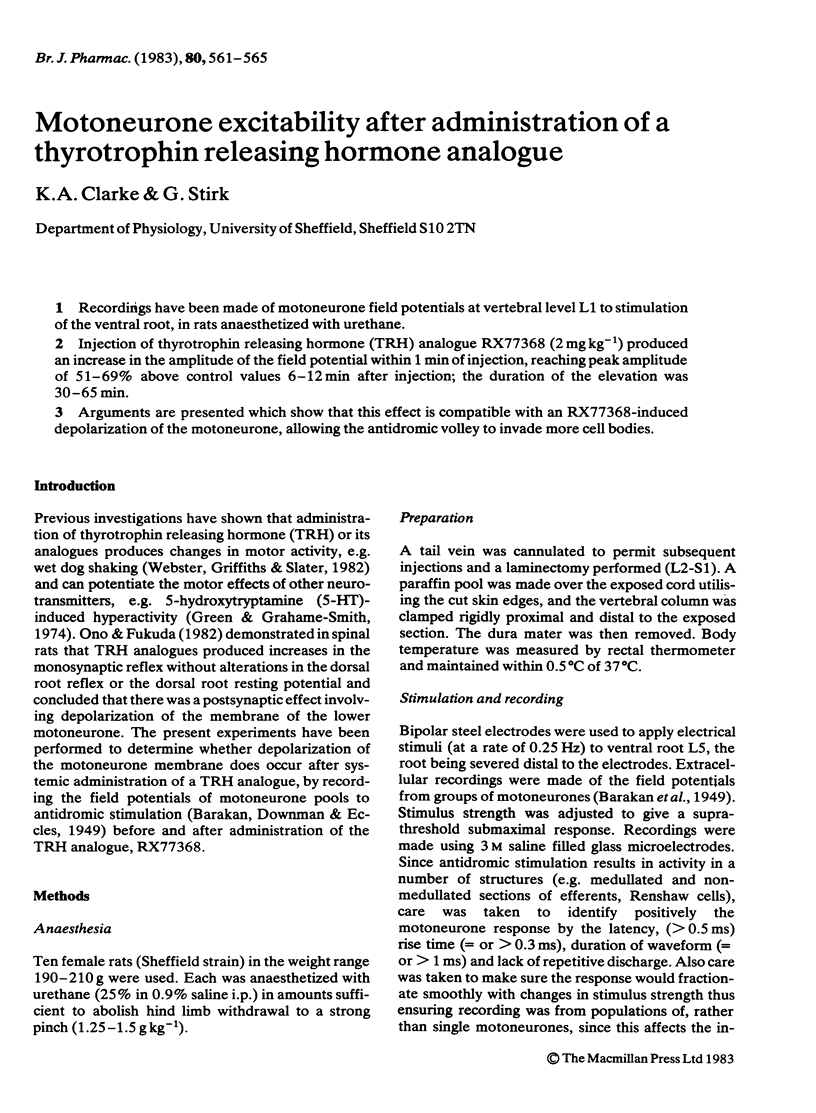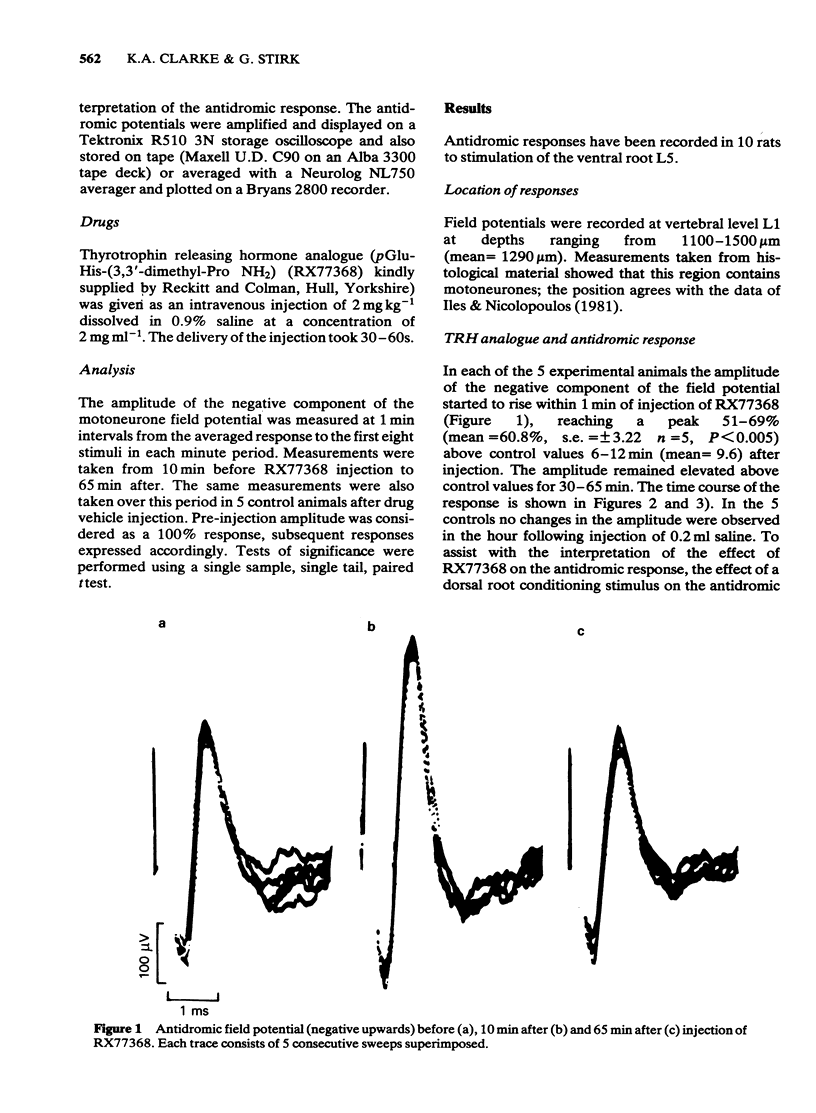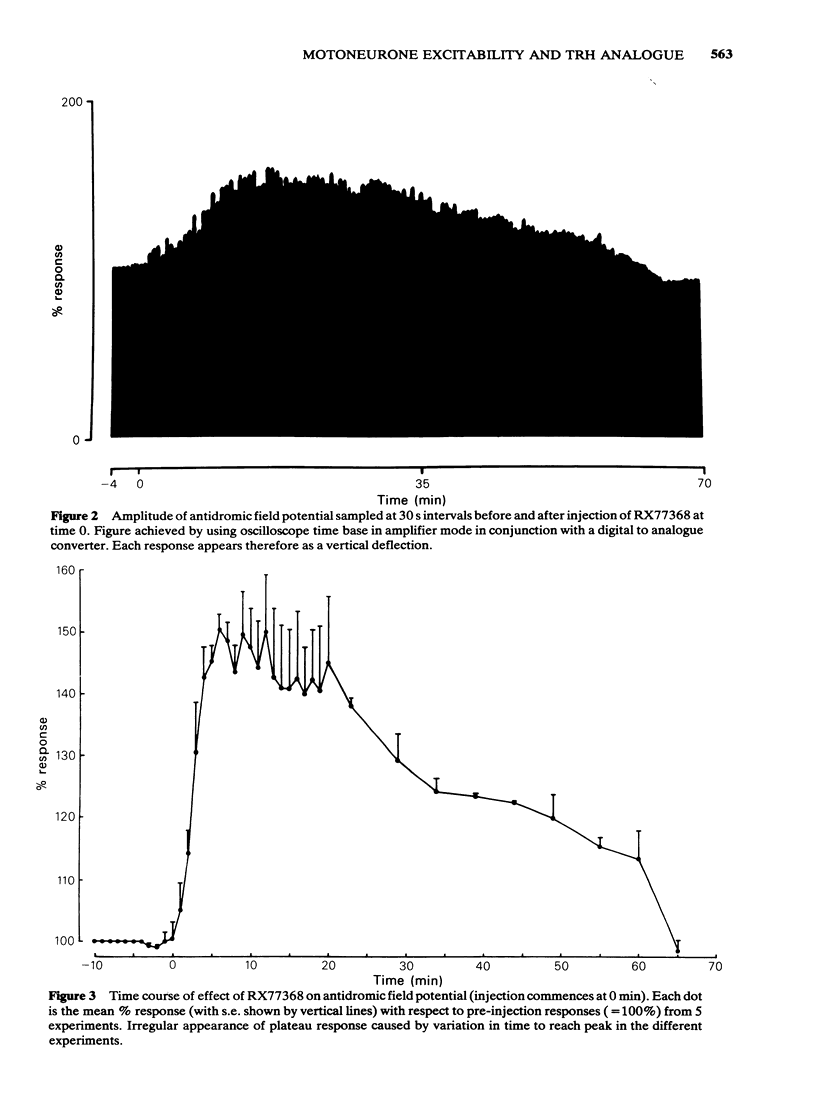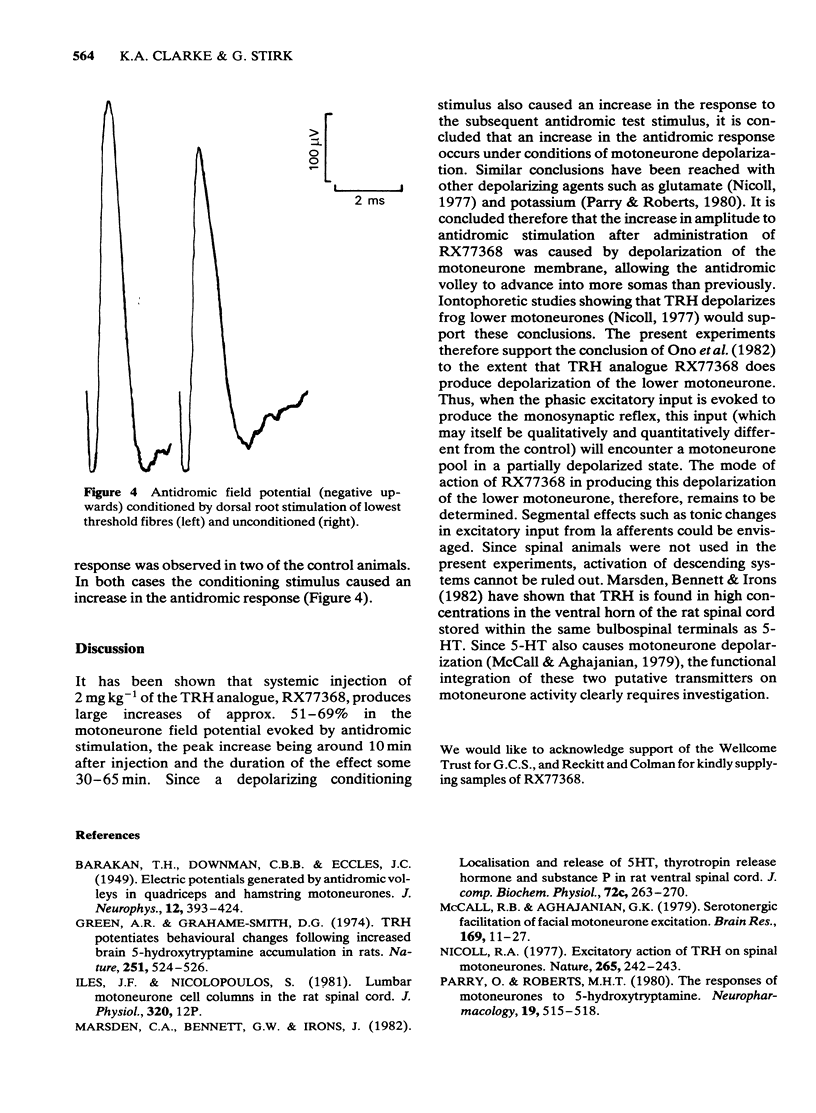Abstract
Recording have been made of motoneurone field potentials at vertebral level L1 to stimulation of the ventral root, in rats anaesthetized with urethane. Injection of thyrotrophin releasing hormone (TRH) analogue RX77368 (2 mg kg-1) produced an increase in the amplitude of the field potential within 1 min of injection, reaching peak amplitude of 51-69% above control values 6-12 min after injection; the duration of the elevation was 30-65 min. Arguments are presented which show that this effect is compatible with an RX77368-induced depolarization of the motoneurone, allowing the antidromic volley to invade more cell bodies.
Full text
PDF




Selected References
These references are in PubMed. This may not be the complete list of references from this article.
- BARAKAN T. H., DOWNMAN C. B. B., ECCLES J. C. Electric potentials generated by antidromic volleys in quadriceps and hamstring motoneurons. J Neurophysiol. 1949 Nov;12(6):393–424. doi: 10.1152/jn.1949.12.6.393. [DOI] [PubMed] [Google Scholar]
- Green A. R., Grahame-Smith D. G. TRH potentiates behavioural changes following increased brain 5-hydroxytryptamine accumulation in rats. Nature. 1974 Oct 11;251(5475):524–526. doi: 10.1038/251524a0. [DOI] [PubMed] [Google Scholar]
- Marsden C. A., Bennett G. W., Irons J., Gilbert R. F., Emson P. C. Localization and release of 5-hydroxytryptamine thyrotrophin releasing hormone and substance P in rat ventral spinal cord. Comp Biochem Physiol C. 1982;72(2):263–270. doi: 10.1016/0306-4492(82)90093-4. [DOI] [PubMed] [Google Scholar]
- McCall R. B., Aghajanian G. K. Serotonergic facilitation of facial motoneuron excitation. Brain Res. 1979 Jun 15;169(1):11–27. doi: 10.1016/0006-8993(79)90370-6. [DOI] [PubMed] [Google Scholar]
- Nicoll R. A. Excitatory action of TRH on spinal motoneurones. Nature. 1977 Jan 20;265(5591):242–243. doi: 10.1038/265242a0. [DOI] [PubMed] [Google Scholar]
- Ono H., Fukuda H. Ventral root depolarization and spinal reflex augmentation by a TRH analog in rat spinal cord. Neuropharmacology. 1982 Aug;21(8):739–744. doi: 10.1016/0028-3908(82)90058-2. [DOI] [PubMed] [Google Scholar]
- Parry O., Roberts M. H. The responses of motoneurones to 5-hydroxytryptamine. Neuropharmacology. 1980 Jun;19(6):515–518. doi: 10.1016/0028-3908(80)90020-9. [DOI] [PubMed] [Google Scholar]
- Webster V. A., Griffiths E. C., Slater P. Induction of wet-dog shaking in rats by analogues and metabolites of thyrotrophin-releasing hormone (TRH). Regul Pept. 1982 Dec;5(1):43–51. doi: 10.1016/0167-0115(82)90074-x. [DOI] [PubMed] [Google Scholar]


